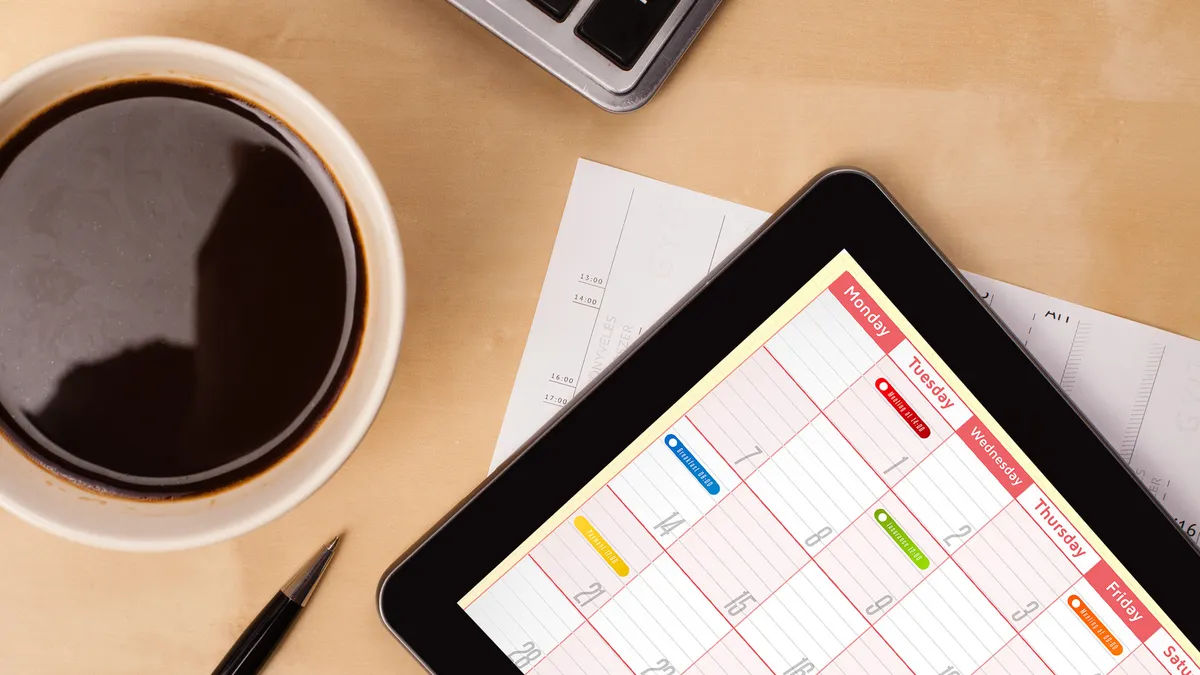Procurement may be tempted to sit back and let finance manage vendor payments and the cash-to-cash cycle. But the buying department has an opportunity to play a role in decision-making and negotiations — and finance has every reason to encourage that opportunity.
Put simply, the cash-to-cash cycle (CCC) is the period between the purchase of materials or inventory from a supplier and the payment for those products.
A company’s capital will not generate value if it's tied up in inventory, and the procurement department has its finger close to this pulse. "Oftentimes, the approach to CCC simply trickles down to procurement, which executes on that strategy," said Kristin Ruehle, managing director of procurement services for Accenture Operations. "But procurement can add value to the cycle," she told Supply Chain Dive.
It's in the terms
The department can look for opportunities to optimize lead times, consider discounting and ensure the best pricing. Its insights can be valuable when it comes time to arrange and review contracts with suppliers. Shawn Townsend, a director with The Hackett Group, said that, ultimately, the goal should be figuring out how much inventory to carry and when to buy it. "That means recognizing the importance of setting the best terms," he told Supply Chain Dive.
"Oftentimes, the approach to CCC simply trickles down to procurement, which executes on that strategy. But procurement can add value to the cycle."

Kristin Ruehle
Managing Director of Procurement Services, Accenture
In most cases, payment terms range from 30 to 60 days. "This will vary quite a bit from one industry to the next and one region to the next," said Townsend. "Ideally, you will be able to work it out to delay payment for as long as possible to hold onto your working cash.”
With this approach, a company can add value by investing in other areas of the company. While this varies from one business to the next, there are a few common targets for these funds, said Ruehle. "Some companies are using it to think about ways to pivot with their business," she explained. "Others are considering what new customers they might address, or which new industries or variations of their products would be smart."
Extend strategically
Townsend recommends looking for opportunities to extend contract terms with suppliers. "One way to accomplish this is to negotiate starting payment periods at receipt of materials, rather than on the invoice date," he said.
This includes taking stock of terms with each supplier to determine which might be amenable to such an arrangement. Also, when working with one-time or infrequent suppliers, the opportunity might exist to extend payment terms. "These partners might be a place to look for 90-day terms," said Ruehle. "Segment your supply based on strategic partnerships you have."
For instance, if there is a particularly low-value partnership, Ruehle recommends considering a purchasing card or financing through a bank. "Extend your terms as much as possible with this less strategic base of suppliers," she said.
"Instead of being the bully, have discussions for true collaboration."

Kristin Ruehle
Managing Director of Procurement Services, Accenture
The more strategic the partnership, the more important the dialogue and mutually acceptable terms.
Craig Bailey, associate principal with Hackett, said there’s also the option to ask for discounts for shorter terms. "These will impact your working capital, so negotiate," he told Supply Chain Dive. "For instance, if you agree to a 10-day term, ask for a 1.5% to 2% discount."
Foster a partnership
When working with key suppliers, aim for win/win, said Ruehle. "Instead of being the bully, have discussions for true collaboration," she said. "Look for situations that benefit you both and meet in the middle."
Ruehle offered the example of a major oil and gas company that tackled this challenge as part of a multi-year digital transformation. By automating enterprise-wide finance processes and applying supplier analytics, procurement AI and infrastructure to capture and mine diverse data sets, the company freed up more than $200 million in working capital while continuing to unlock new procurement and supplier insights that will help the business grow profitably. The finance and procurement teams partnered with AI researchers and analytics experts to improve controls, increase productivity and improve on-time payments.
In some unique cases, a partnership may represent a 360-degree relationship, said Ruehle. "Sometimes it goes one step further and the supplier is also a customer," she said. "In such a case, you need a productive dialogue to reach win/win terms."
Typically, the terms established with partners will remain in place until the next contract negotiation, unless there is an issue that needs addressing in the meantime. In the end, it all goes back to that ongoing, inter-departmental awareness and dialogue. "The key is to establish a better relationship with your finance or treasury department, rather than simply executing the guidelines they give you," said Ruehle. "Reach out. Learn what they’re trying to achieve, and determine how you can help them."
This story was first published in our weekly newsletter, Supply Chain Dive: Procurement. Sign up here.






















